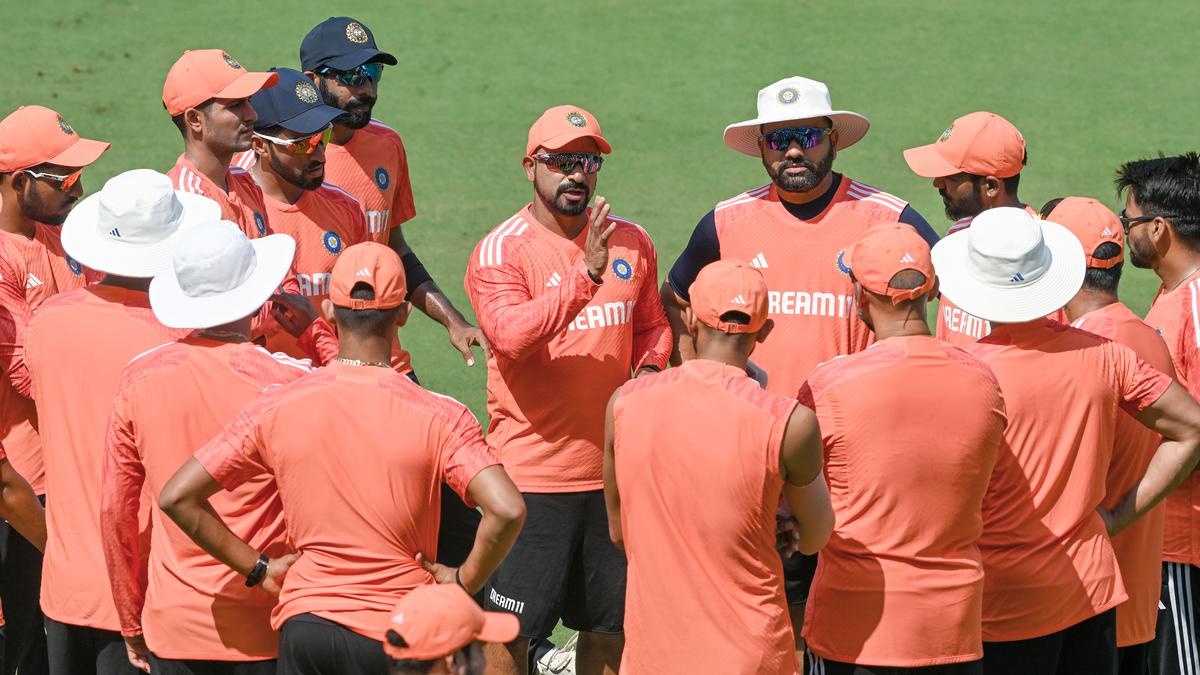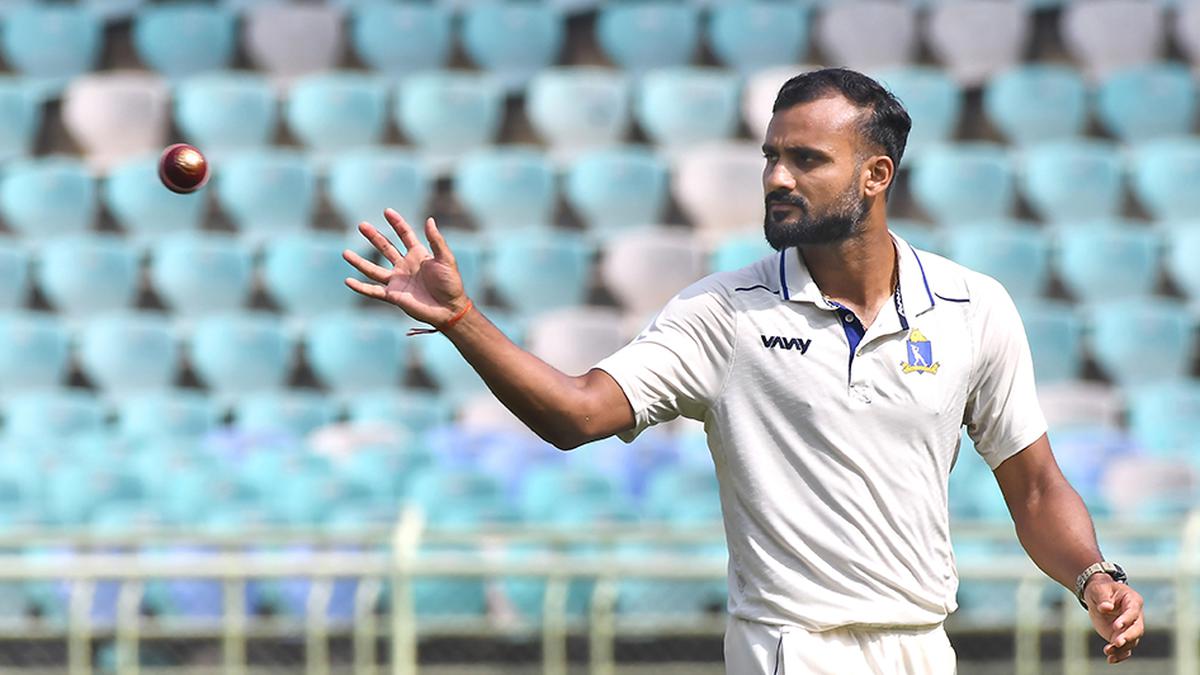Fielding is not just an aspect of cricket; it is the game-changer that can profoundly influence the outcome of a match or even an entire tournament.
While batting and bowling hog the limelight, fielding is as, if not the most important facet. A stunning catch, a lightning-quick direct hit, or a diving stop can shift the momentum of a game in a heartbeat. Its impact reverberates far beyond the boundary, shaping the destiny of players and teams.
The date is June 29 2024. The place is Kensington Oval, Barbados, and the occasion is the Men’s T20 World Cup final.
It’s a clash between a side that has come agonisingly close to winning the title in recent times and another with a rich history of incredible talent but an inability to turn up in crunch moments, enough to earn the moniker ‘Chokers.’
In Barbados, after a scintillating run to the final, it suddenly looked like a familiar script was unfolding. As the elusive World Cup title looked like it was slipping out of India’s grasp once more, Hardik Pandya was entrusted by India captain Rohit Sharma with the daunting task of defending just 16 runs off the last over. He had the unenviable task of doing so against South Africa’s big-hitting David Miller.
The weight of history was not lost on this moment. An extraordinary century, a devastating spell of bowling, or a championship-winning catch, are not just mere incidents in a match, particularly in a final. They could just prove pivotal in the game’s narrative.
A striking example of this is Kapil Dev’s remarkable catch to dismiss — arguably, the greatest batter the world had seen — Sir Viv Richards in the 1983 World Cup final. That one simple catch changed not just the course of the final, but the destiny of Indian cricket forever.
Cut to Barbados and in the thick of it all was a player heavily likened to Kapil for his allround prowess. The aspirations of 1.5 billion Indians hinged on Hardik and the field around him to deliver.
Miller began with purpose, going after Hardik off the very first ball of the 20th over, a low, wide full toss outside off heading straight down the ground. On any other day, it would have been curtains for India.
However, in an electrifying turn of events, Suryakumar Yadav pulled off one of the most memorable catches in World Cup history. Racing from wide long-off, he skillfully plucked the ball with extraordinary precision millimeters away from the boundary cushions.
While his momentum threatenened to carry him past the ropes, the ace batter had the presence of mind to throw the ball back in the air. He hopped back into the field of play and completed one of the most important catches of his career, all in a few seconds!
‘OUT’ said the giant screen. The cameras then instantly panned to one man in particular in the Indian dugout, jumping and punching the air: India’s fielding coach, T. Dilip. Five balls later, it was time to say the words once could scarcely believe – India was world champion.
Dilip’s quiet hard work behind the scenes would go down to the difference between India holding the trophy and finishing empty-handed from an ICC tournament once more.
Dressing room rituals
India’s 2023 World Cup campaign was punctuated by notable moments, both on and off the field. One of the most endearing was the fielding awards ceremony, a unique gathering in the Indian dressing room after every match.
The regular programming on BCCI TV took a delightful turn with the inclusion of captivating behind-the-scenes footage of the fielding medal ceremony.
This was Dilip’s brainchild.
To recognise and reward exceptional performances on the field, he ensured that the legends of the game from Sachin Tendulkar, Viv Richards, Dinesh Karthik and even a novel use of the spider cam, were involved. The idea was to boost team morale and celebrate the little moments that made India the juggernaut it was in the run-up to the final.
“It is about judging attitude. There are statistics for catches taken and many boundaries stopped, but we look at the overall contribution. An inning has 300 balls; how do you handle them on the field? This is not just about one brilliant catch but the overall effort,” Dilip said while acquainting reporters with the ceremony during the ODI showpiece.
The artist
Morale-building was particularly important to Dilip given the tribulations he had to go through in his own career.
As an 11-year-old, Dilip — like many others his age — dreamt of one day donning national colours. However, countless elements came in the way, including the absence of financial assistance and his family’s support. Add to that the fierce competition back in the day.
From a tender age, he held onto his aspirations of donning the national colours someday and showcasing his exceptional talent on the cricketing stage. But with the fierce competition back then, he couldn’t move further up the ladder as a player.
Despite encountering formidable obstacles, including the absence of financial assistance and support from his family, he persevered and found solace in imparting knowledge as a mathematics tutor.
Talking to India’s second-highest wicket-taker, R. Ashwin, on his YouTube channel, Dilip said,
“My journey has been pretty challenging with many ups and downs, but I am happy about where I have reached,” Dilip told seasoned Indian spinner R. Ashwin in a chat on his YouTube channel.
“Luckily, I was very good at studies, so I could manage with taking tuitions. I used to teach maths to ensure it took care of the financial needs of attending an academy and playing cricket.
“My father was very clear, ‘No sports.’ I didn’t have that option because he did not know much about sports.”
Despite encountering numerous hardships, Dilip’s unwavering love for the game propelled him towards the cricket fields of Hyderabad and it took plenty of sacrifices to fuel his ambitions.
There began his journey as a coach for children aged nine and under at a local academy.
Like any other teacher, his satisfaction came from the success of his students.
“During my playing days, I was expecting people to give me inputs about my game, as to what to do and what not to do.
So, I decided that if I get a chance to teach young kids, I will try to help in whatever way I can. When I taught a particular shot and if the student executed the same in the nets or during a match, I would feel delighted and that ignited the spark in me to take my coaching duties more seriously.”
In 2004, Dilip decided to enrol in the BCCI Level-1 coaching programme.
“I did a level-1 in 2004; I did not see it as a profession back then. I just wanted to learn something. Surprisingly, I ended up among the top three coaches there. For the next couple of years, I played and coached side-by-side.
“But there came a point where I had to decide on where my future was heading in that particular situation, so I chose coaching and, in 2007, I moved up to level-2.”
Dilip quickly found an opportunity to share his expertise as a coach for the under-14 and under-16 teams at the Hyderabad Cricket Academy. His coaching career flourished under the guidance of R. Sridhar, one of India’s top fielding coaches.
“In 2008, I was working at the HCA as the U-14 and U-16 fielding coach. At that time, Sridhar was working at the National Cricket Academy (NCA). He used to guide me on what to do and how to do things. He achieved success by going through the grind. Being from the same state, his journey was inspirational for me.”
With the inception of the Indian Premier League in 2008, Dilip got his first breakthrough- a stint with the now-defunct Deccan Chargers in 2009.
“I got to work for Deccan Chargers for three years. I was Mike Young’s assistant fielding coach.
“Mike Young (was) a baseball coach. I saw his side-arm throws and way of running backwards to take a catch. I honed those skills by observing and assisting him.”
Later that year, Dilip went a step further in his career and realised his dream of joining the NCA as a specialist fielding coach.
“My first goal when I started level-2 in 2007 was to be a coach in the NCA. I never dreamt of being an Indian team coach back then.
“To be practical, I just wanted to be a residential coach at NCA, stay there for one year, and work. That was my goal in 2007, and of course, I got an opportunity in 2009. Over time, the NCA gave me the financial help I needed and the experience to work with professionals.
“Even HCA gave me a position as a coach. Maybe the financial upside was not too high but the experience of working with U-14, U-16, U-19, U-22, U-25, and then the Ranji Trophy team, and working with the players from the state and at the NCA gave me many opportunities to learn what exactly a player requires at the highest level.
“From 2008 to 2019, I was with the NCA. I worked in various national and zonal camps with women, junior boys, and others. I was able to work with players like Shubman Gill and Axar Patel among others during their formative years.”
When R. Sridhar concluded his seven-year stint as the Indian team’s fielding coach, the side was a changed unit.
It was now a top-notch fielding outfit, with a new intensity and openness to innovation in the field and with the keeping gloves.
When Dilip took over, he was entrusted with maintaining this high standard and ensuring effective player management. This is a key aspect of the team’s holistic development and a duty he has essayed to perfection to date.
There may be a ‘Dilip’ in most cricket lovers, who would have yearned to represent the nation on the cricket field.
His extraordinary metamorphosis from a humble mathematics tutor widely admired for his modesty and unwavering dedication, to an influential mentor for prodigies and established superstars is incredibly heart-warming. His passion for the game is a thread that connects us all.
While we continue to comment on cricket matches from our living rooms and armchairs, he is shaping future cricket stars in the team’s dressing room. We dreamt, and he is living our dream.




